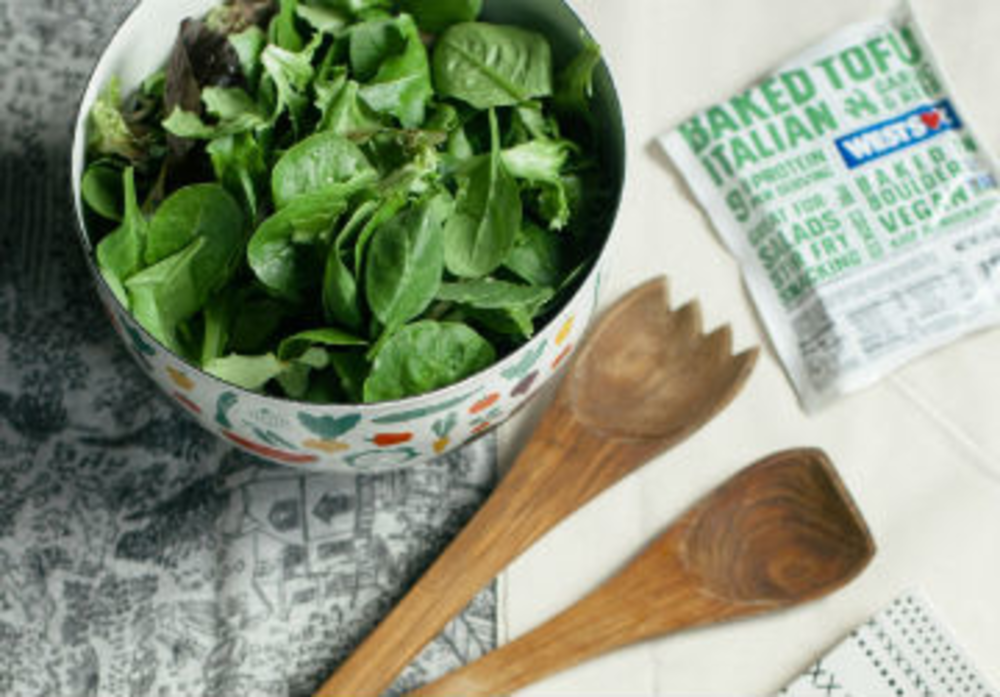Colorado may not know how to pull off a Super Bowl victory. But the “Centennial State” knows a thing or two about tofu. WestSoy Tofu wanted to promote its use of Boulder-based ingredients and debunk the myth that meatless food is tasteless food. To convey the versatility and flavor of its tofu, the natural food brand leveraged visual storytelling in its #BakedInBoulder campaign.
The campaign, which launched on December 1, 2013, features tofu recipes, entertaining GIFs, and pictures of Colorado’s scenery on WestSoy’s Instagram and Tumblr platforms. All of the content contains a mix of branded hashtags—including #WestSoy—and non-branded hashtags—including #vegetarian and #BakedInBoulder. However, Michael Goose, director of marketing for the refrigerated division of parent company Hain Celestial Group Inc, says that the brand created the #BakedInBoulder hashtag “way before” Colorado legalized recreational marijuana.
Leslie Hall, president and cofounder of WestSoy’s digital marketing agency ICED Media, says that branded hashtags provide different benefits compared to non-branded hashtags.
“Branded hashtags do a better job of linking the historical footprint of the entire brand communication,” she says. “Unbranded hashtags…[are] a really great way to tie together—from a visual perspective—what the story around a particular product, message, or communication is.”
WestSoy leveraged Tumblr and Instagram, Goose notes, because they’re popular channels with college students. This young audience comprises a large portion of the brand’s key demographic, he says, and often has a heavy interest in reducing their overall meat intake. However, the idea that vegetarianism is simply a form of cuisine, rather than a dietary sacrifice, is a message that WestSoy is striving to deliver to all of its consumers.
“We don’t want to be branded as the vegetarian company. We want to be branded as the culinary food company,” Goose says. “We truly believe that vegetarian food is not a diet restraint, but more of a culinary option.”
In addition to wanting to attract a younger audience, WestSoy decided to leverage Tumblr and Instagram to allow consumers to sample the brand’s personal flavor through content. To help spread this content, WestSoy also partnered with key influencers.
“I didn’t want us to be another ‘liked’ brand [or] a brand that showed up on people’s dashboards with random tips,” Goose says. “I wanted a real platform that could transform the [brand’s] personality and become a place where people look for content versus a place where people just have content thrown at them.”
And the focus on content didn’t end online. Natural food consumers are more likely to read the ingredients on a food package and inquire about how a product is made versus mainstream consumers, Goose says. As a result, WestSoy redesigned its tofu packages to solely feature product information, such as the amount of protein included and cooking recommendations.
“Our main focus on our product right now…is to give consumers the story on the front of page,” Goose says. “But do it in a stylish way.”
Hall says that WestSoy’s top Tumblr post accumulated more than 5,000 re-blogs and “tens of thousands” of notes within the campaign’s first few weeks. She also says that Tumblr picked up one of WestSoy’s trending posts and featured it across its entire network.
As the campaign continues, Hall notes that some brands may be able to leverage visual storytelling better than others. For example, Tumblr was a great fit for WestSoy, she says, because of the platform’s already “thriving” food community.
“It was the idea that our investment could go [beyond]…creating the content and creating a house to hub all of this great content,” she says, “but that we could do it by building on top of a platform where we know that a qualified audience already lives and then partner with some key influencers who are driving that conversation on the platform.”








